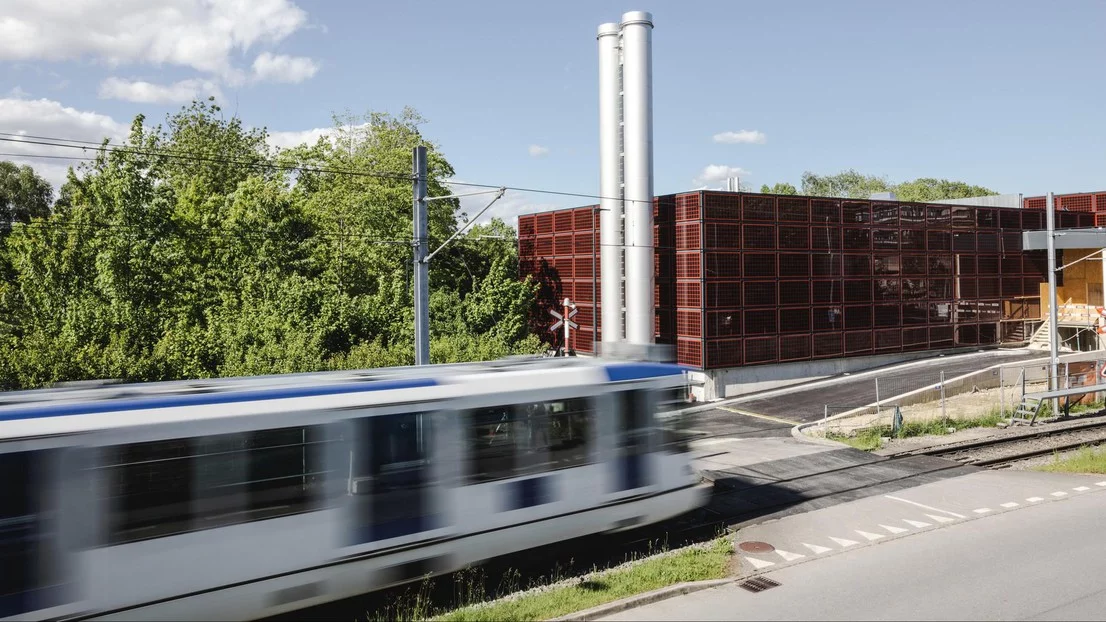EPFL’s new Kuma supercomputer, which ranks 23rd in the Green500 ranking, illustrates EPFL’s efforts to support cutting-edge research with a low environmental impact. With Kuma, EPFL is helping anchor Switzerland’s position at the forefront of sustainable computing.

EPFL’s research labs produce eye-watering amounts of data every day. For instance, those who use the services of EPFL’s Scientific IT & Application Support Department (SCITAS) generate 314 terabytes of data every three months – and this data needs to be kept for five to ten years.
Powerful computers are obviously needed to be able to process all this data efficiently. But as the number-crunching capabilities of modern supercomputers increase, so does their carbon footprint. That’s why developing IT equipment and infrastructures that are as powerful as they are energy-efficient is therefore a top priority.
EPFL gets a world-class supercomputer
EPFL has taken an important step towards reaching this goal with Kuma, a new supercomputer implemented and operated by SCITAS. It gives our researchers access to high-performance computing capabilities through a system that’s user-oriented with an intuitive interface and eco-friendly design. Kuma’s servers are installed in the data center connected to EPFL’s new heating plant, which draws water from Lake Geneva to cool the IT equipment and then supply heating to the rest of the campus.
“Thanks to Kuma, EPFL will be able to keep breaking new ground in artificial intelligence and sustainable computing, setting the pace on a global scale,” says Gilles Fourestey, the head of operations at SCITAS. “The supercomputer’s powerful processors will accelerate innovation in applications that already rely heavily on computing capabilities, such as healthcare, climate research, materials science and other critical fields.” adds Michele Ceriotti, director of the scientific steering committee of the platform.

Kuma was developed through a joint initiative between Lenovo and EPFL’s EcoCloud center. Lenovo supplied the data processing and storage systems and will provide technical support throughout the supercomputer’s lifespan. Meanwhile, EcoCloud devised a system for obtaining precise measurements of its processing speed and evaluating its energy efficiency.
“For EcoCloud, this collaboration with SCITAS was key to the application of EPFL research on sustainable computing to the design of cutting-edge supercomputers which can be used in the new EPFL data center”, says David Atienza, former Scientific Director of the EcoCloud Center and Associate Vice President for Centers and Platforms at EPFL.“This is a great example of teamwork between the Associate Vice Presidency for Centers and Platforms (AVP-CP) and the Vice Presidency of Operations (VPO) towards conceiving sustainable computing infrastructures. Moreover, the great outcome from the Green500 ranking gives all of us a clear extra motivation to push further this collaboration in the future.”
Where high-power computing meets energy efficiency
Kuma performs well in international comparisons. It ranks 23rd in the Green500 ranking of the world’s most energy-efficient supercomputers – and 10th if you consider only supercomputers installed at universities. This is the first year that EPFL has appeared in the Green500. Kuma also ranks 103rd in the Top500 ranking of the world’s most powerful supercomputers, marking EPFL’s return to the list after an eight-year hiatus. This exceptional performance on both fronts makes Kuma one of the top research-computing platforms in terms of performance and carbon emissions.
Kuma is powered by 334 next-generation NVIDIA graphics cards housed in 84 servers connected through an ultra-high-speed (400 GB/s) network. The supercomputer’s H100 disk-partitioning system has a power requirement of just 18 watts per TFLOPS1. By comparison, Kuma’s predecessor, IZAR (in operation between 2020 and 2024), had a power requirement of 81 watts per TFLOPS.
Kuma was up and running less than 90 days after it was delivered – a notable achievement in the IT space. Antonio J. Russo, the head of HPC systems at SCITAS, says: “That reflects not only the seamless collaboration between EPFL and Lenovo, but also our efficient DevOps processes at SCITAS, which enabled us to quickly implement a broad suite of research software. It also highlights the effective way in which EPFL’s research centers and IT departments – including SCITAS and EcoCloud – were able to work together.”
Shoring up Switzerland’s high-power computing ecosystem
EPFL’s acquisition of the Kuma system is aligned with the Swiss federal government’s ongoing plan which aims to keep Switzerland at the forefront of computing capacities dedicated to scientific research. This initiative reflects Switzerland’s enduring commitment to guarantee its scientists access to the most powerful computing systems, thus supporting the country’s position as a global leader in research.
Kuma enhances Switzerland’s high-performance computing ecosystem and provides EPFL researchers with a powerful new computing resource. Kuma can be seen as a complement to the Alps supercomputer, which was recently inaugurated at the Swiss National Supercomputing Centre (CSCS) in Lugano. Alps, a national research resource, is similarly based on the latest generation of NVIDIA graphics cards, thereby meeting the highest demands for computing and data-processing power and contributing to Switzerland’s national AI strategy. From a holistic perspective, Kuma and Alps strengthen Switzerland’s national research infrastructure, offering Swiss scientists unique tools to tackle large-scale scientific challenges.
What happened to IZAR?
On 1 November, IZAR was migrated so that it’s now devoted exclusively to educational activities, such as training students on computer simulation software for research applications or helping master’s students complete their semester projects. This change not only enhances the education we can provide our students, but also extends the supercomputers’ lifespan and ensures that our IT systems are used in a way that’s in line with our sustainability commitments.
The supercomputers set aside for educational purposes at EPFL are used less intensively than those devoted to high-powered research. They’re therefore equipped with an energy efficiency feature that automatically turns off components that aren’t being used, reducing the hardware’s overall energy consumption and carbon footprint.
1FLOPS = floating-point operations per second, the unit of measure used to evaluate processor speed. 1 TFLOPS equals 1×1012 FLOPS.
Authors: Scitas, Mediacom
Source: EPFL